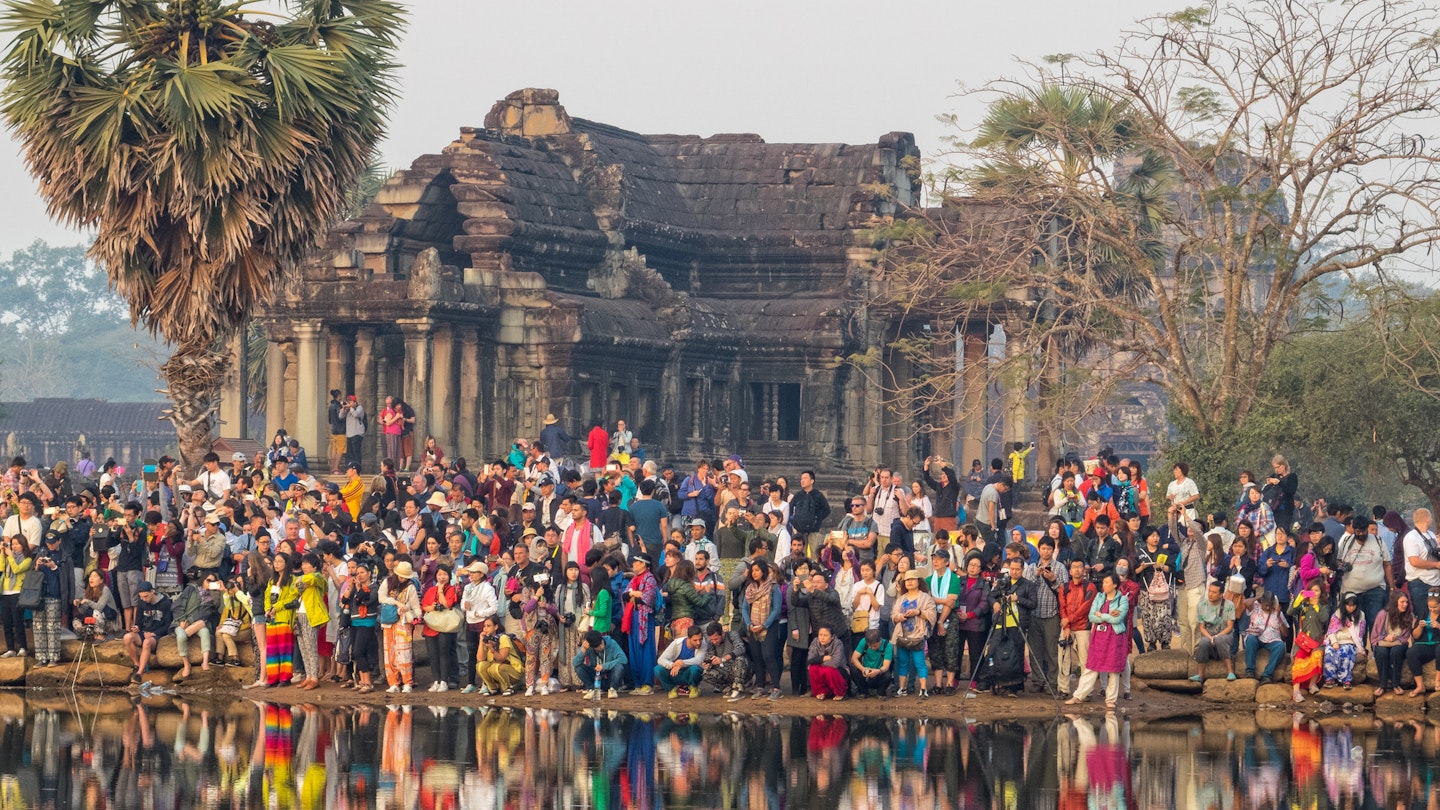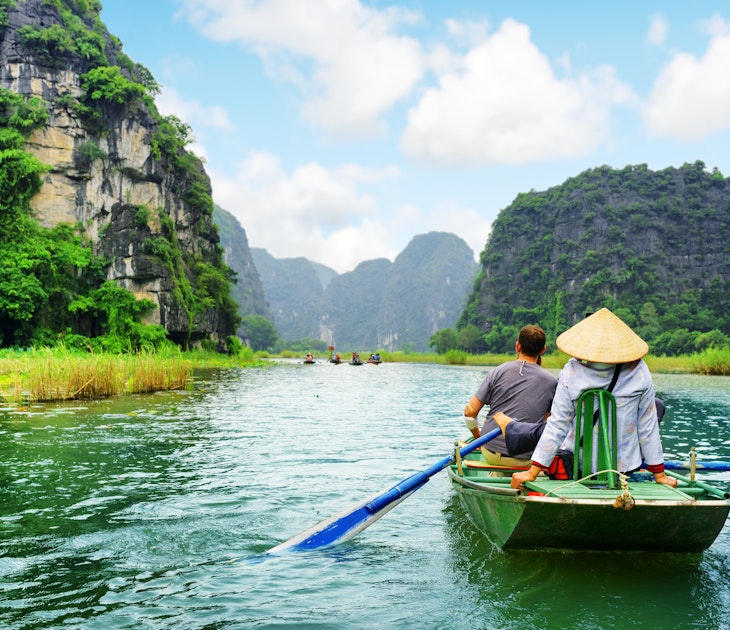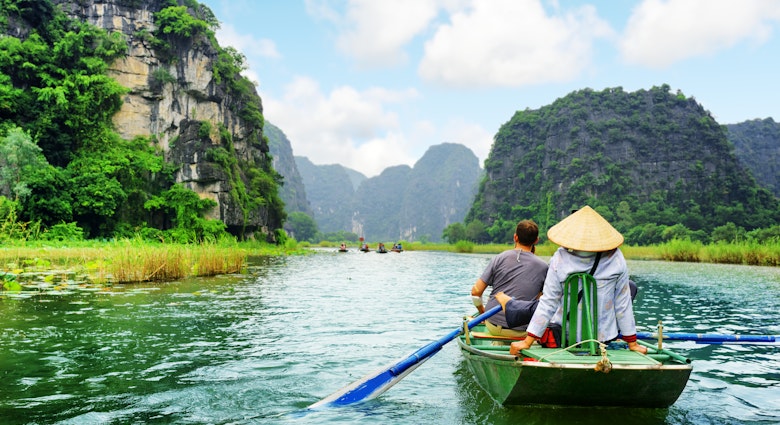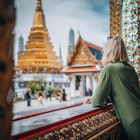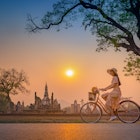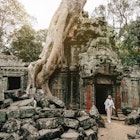Some Cambodians wryly observe that Cambodia has three seasons – hot, hotter and hottest – but in reality, there are distinct dry and wet seasons that define the harvest cycle and dramatically alter the character of the landscape in this fascinating Southeast Asian nation.
The dry season runs from November to May, and the "cool season" months of November to February are the most popular time to visit Cambodia due to milder temperatures. The countryside appears somewhat parched from February to May when daytime temperatures can soar above 40°C (104°F ).
The wet season usually runs from June to October, coinciding with the southwest monsoon, but it's not necessarily a bad time to travel to Cambodia. It usually only rains heavily once a day towards sunset, the countryside is a blaze of green, and many hotels and resorts offer substantial discounts.
Here's a guide to the best times to visit Cambodia.
The high season (November–March) is the best time for good weather and exploring temples
Temperatures in Cambodia are much more Mediterranean during the "winter" months in Southeast Asia. The mercury occasionally drops below 20°C (68°F), forcing Cambodians to scramble for their coats and woollies. This makes exploring the temples much more pleasant, but it's also the most crowded time at Angkor. Lots of accommodation is booked out in advance, particularly over the Christmas and New Year period and during Chinese New Year, which follows the lunar calendar, falling in January or February.
The shoulder season (July–August) is the best time for families
Although this is the middle of Cambodia's wet season, it doesn’t usually rain that much, though there's enough water to swell the Tonle Sap lake. It's an ideal time for families living in Europe and North America, thanks to the long school holidays and discounted prices at hotels and resorts.
There are also far fewer tourists exploring Angkor during the "green season" when the moats are full of water and many of the temples are coated in moss and lichen. The main drawback of shoulder season travel is that it can rain quite heavily on the coast, meaning Ko Rong and other idyllic islands near Sihanoukville can be quite wet and windy.
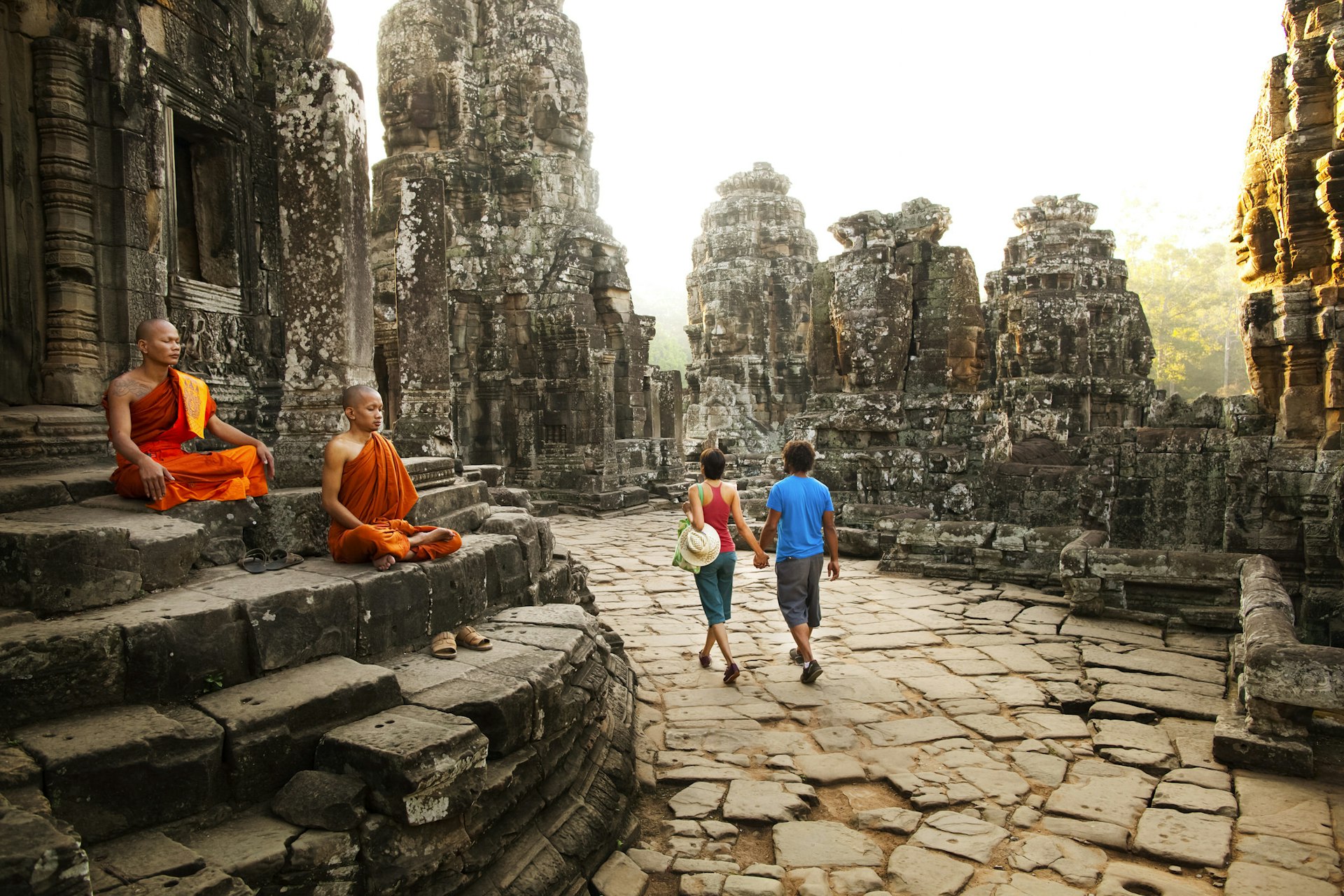
The low season (April–June & September–October) is the best time for discounts
When it comes to weather, these months are definitely not the best. Temperatures in April and May reach scorchio levels, and September and October are wet, wet, wet. However, this is the time when accommodation providers release their best special offers. You can save a huge amount of money if you plan on staying at five-star hotels and luxury resorts. September and October are the height of the rainy season, but this also brings emerald landscapes and epic cloud formations.
A month-by-month planner
Many of Cambodia's big festivals follow the lunar calendar and spill across more than one month on the Gregorian calendar. Here's a guide to what is happening throughout the year.
January–March is the busiest time of year
This is peak tourist season in Cambodia, and Phnom Penh, Siem Reap and the South Coast are usually heaving. The internationally recognized New Year celebrations are followed by Chinese and Vietnamese New Years' festivities, so be ready for some serious festive cheer.
Chaul Chnam Chen & Tet: The Chinese New Year – known locally as Chaul Chnam Chen – coincides with Tet, the Vietnamese New Year, falling in either January or February depending on the year. As many of Phnom Penh’s businesses are run by Chinese-Khmers, commerce grinds to a halt around this time and there are dragon dances all over the capital.
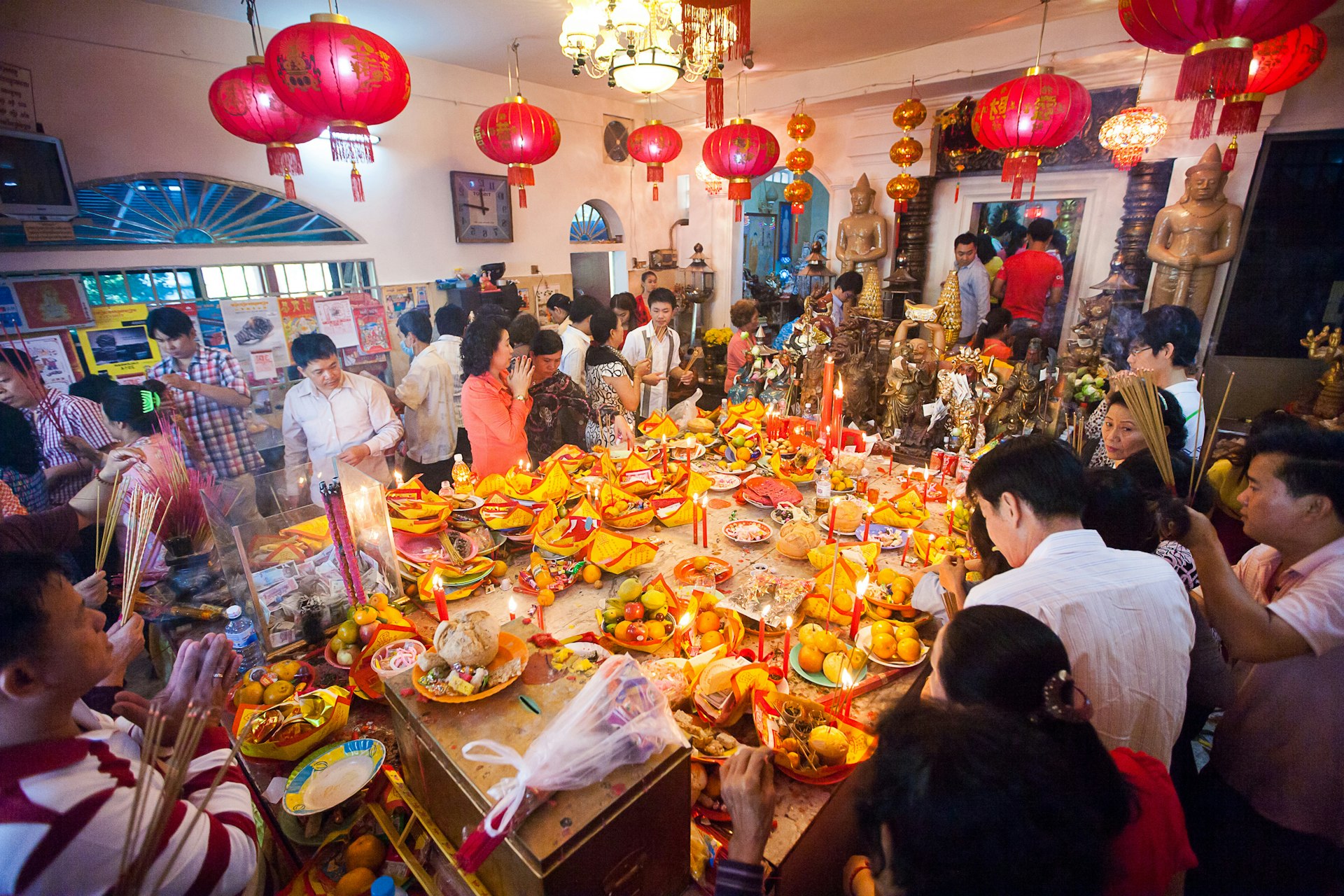
April–June brings festivals and the start of the rains
This is the beginning of the low season for visitors, as the monsoon swoops in, bringing regular rain until October. Young rice is planted and the landscape begins to come to life once more in a blaze of green after the parched months of the dry season. April is the most important month in the calendar for Khmers, marking the Cambodian New Year. However, temperatures rocket and the mercury regularly hits 40°C (104°F).
Chaul Chnam Khmer: During the three-day celebration of Chaul Chnam Khmer (Khmer New Year) in mid-April, Cambodians make offerings at wats, clean out their homes and exchange gifts. It is a memorable time to visit the Kingdom as Khmers go wild with water in the countryside, and a good-natured water fight spills across the country (throwing talcum powder is also popular).
Chat Preah Nengkal (Royal Ploughing Ceremony): Presided over by the royal family, the Royal Ploughing Ceremony is an ancient agricultural festival held to mark the traditional beginning of the rice-growing season. The royal oxen predict whether or not it will be a good harvest by tucking into the sacred crop. The ritual takes place in early May and rotates around different provincial capitals.
Visakha Puja (Buddha Day): A celebration of Buddha’s birth, enlightenment and parinibbana (passing), Visakha Puja sees locals flock to wats (pagodas) to pay their respects. The festival falls on the eighth day of the fourth moon (in May or June) and sees processions of monks carrying candles through Angkor Wat at night.
July–September sees more celebrations and crowds of backpackers
Tourism numbers see a bounce in July and August thanks to the annual school holidays in Europe and the US. Backpackers also descend on Cambodia and the Mekong region to take advantage of university and college holidays. September is traditionally the wettest month in Cambodia, with sporadic flooding along the Mekong and around Battambang. The Khmer calendar’s second-most-important festival, P’chum Ben, falls in September or October.
P’chum Ben (Festival of the Dead): This festival resembles the Christian celebration of All Souls’ Day when respects are paid to the dead through offerings made at wats. P’chum Ben lasts for several days and devout Buddhists are expected to visit seven wats during the festival. Local temples are a blaze of color, ceremonies and chanting.

October-December sees rain give way to warm, dry winds
The rains extend deep into October and this has led to some serious flooding in recent years. However, the countryside is extraordinarily green, and it's a rewarding time for boat travel between Siem Reap and Battambang. November sees the start of the dry, windy season, the best time to be in the country. The peak tourist season starts and continues through until February.
Bon Om Tuk, the much-celebrated Water Festival, takes place in October or November. Christmas and New Year are peak times for visitors at Angkor and leading beach resorts, so book a long way ahead. The international New Year on 31 December is widely (and wildly) celebrated in key cities such as Phnom Penh and Siem Reap.
Bon Om Tuk (Water Festival): Celebrating the victory of King Jayavarman VII over the Chams, this important festival in October or November also marks the extraordinary natural phenomenon of the reversal of the flow of the Tonlé Sap River. It’s a wonderful, chaotic time to be in Cambodia, with boat races at Sisowath Quay in Phnom Penh, and riverside parties in Siem Reap.
Angkor Photo Festival: In Siem Reap, resident and regional photographers descend on the temples and team up with local youths to teach them the tricks of the trade at this civic-minded festival in November or December. Photography exhibitions are staged all over town and some famous Vietnam War-era photographers are sometimes in attendance.
Angkor Wat International Half Marathon: This half marathon in December has been a fixture on the sporting calendar for two decades. Choose from a 21km (13-mile) half marathon, a 10km (6.2-mile) fun run or various bicycle races. It’s hard to imagine a better backdrop for a run than the incredible temples of Angkor.
You may also like:
Angkor Wat: everything you need to know about Cambodia's most iconic temple
Siem Reap: 11 best things to do after you explore Angkor Wat
Cambodia's less-traveled islands visitors need to know about
